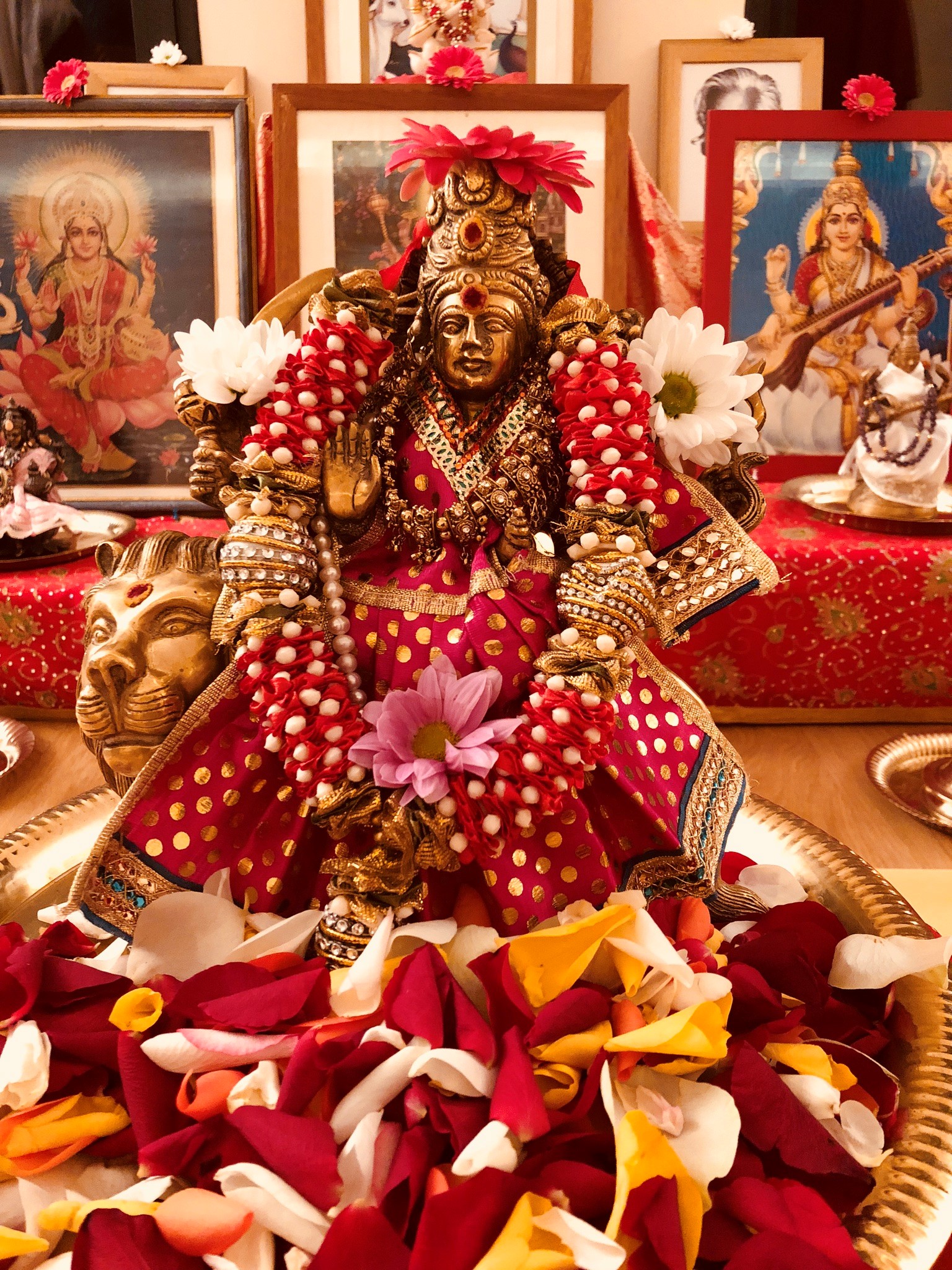Hatha Yoga Tip
Shoulderstand – Sarvāṅgāsana – Beginner and Intermediate
The pressure of the chin against the chest and the inversion of the body in Shoulderstand creates the energy flow of Hatha yoga – the union in the solar plexus of the ascending ‘Ha’, or sun, energy with the descending ‘Tha’, or moon, energy. Always practise Matsyāsana (Fish) as the counterpose, then relax in Śavāsana (Corpse Pose) for at least eight breaths.
BENEFITS
Physical
• Tones and revitalizes the thyroid and parathyroid glands. This improves and balances the metabolism of literally every cell in the body.
• Improves the blood supply to the roots of the spinal nerves.
• Stretches away any stress held in the shoulder and neck area.
• Relieves the pain of varicose veins.
Mental
• Stimulates cheerfulness and helps to cure depression.
• Helps to relieve mental sluggishness and promotes clear thinking.
BEGINNER
1. Lie flat on your back with your legs together, arms next to your body, and palms touching the mat. Breathe rhythmically in your abdomen.
2. Keeping your back, head, and neck on the mat, inhale and, with your legs straight, lift them to a 90-degree angle.
3. On another inhalation, gently lift your legs and hips until you can place your hands and fingers flat against your lower back. Hold for a few rhythmical breaths, then come down.
To come down, slowly place both arms flat on the floor, palms face down, and bend your hips, bringing both legs slightly behind you, towards the floor. Using you arms as a brake, slowly roll down, vertebra by vertebra. Once your back is flat on the mat, use your abdominal muscles to lower your legs.
INTERMEDIATE
4. To come into the final pose, start from Shoulderstand Step 3. Continue lifting your body until your legs are in a straight line, and bring your chin as close to your chest as possible. Hold for up to 3 minutes.
Caution : If you suffer from high blood pressure, do not hold the pose for more than 30 seconds. If you have a slipped disc or other painful neck condition, practise only as far as Step 3 and then come out of the posture.
Go on, and this knowledge will come automatically: I am That I am. It is your natural state. – Swami Vishnudevananda
Life is not fully lived, life has not been fully realised, if you do not serve and love the entire humanity. – Sri Swami Sivananda
Quick Links
Spiritual Calendar
| SEPTEMBER 2023 06 Sri Krishna Jayanti 08 Swami Sivananda Jayanti 10 Ekadasi 15 New Moon 19 Ganesh Chaturthi 25 Ekadasi 29 Full Moon OCTOBER 2023 Make life a perpetual joy. – Sri Swami Sivananda |
Glossary
DURGA PUJA OR NAVARATRI
Salutations to the Divine Mother, Durga, who exists in all beings in the form of intelligence, mercy, beauty, who is the consort of Lord Shiva, who creates, sustains and destroys the universe. Durga Puja or Navaratri commences on the first and ends on the tenth day of the bright half of Aswayuja (September-October). It is held in commemoration of the victory of Durga over Mahishasura, the buffalo-headed demon. Durga Puja is the greatest Hindu festival in which God is adored as Mother. Durga represents the Divine Mother. She is the energy aspect of the Lord. Without Durga, Shiva has no expression and without Shiva, Durga has no existence. Shiva is the soul of Durga; Durga is identical with Shiva. Lord Shiva is only the silent witness. He is motionless, absolutely changeless. He is not affected by the cosmic play. It is Durga who does everything. Shakti is the omnipotent power of the Lord, or the Cosmic Energy. The Divine Mother is represented as having ten different weapons in Her hands. She sits on a lion. She keeps up the play of the Lord through the three attributes of Nature, namely, Sattwa, Rajas and Tamas. Knowledge, peace, lust, anger, greed, egoism and pride, are all Her forms. You will find in the Devi Sukta of the Rig Veda Samhita that Vak, symbolising speech, the daughter of the sage Anbhirna, realised her identity with the Divine Mother, the Power of the Supreme Lord, which manifests throughout the universe among the gods, among men and beasts and among the creatures of the deep ocean. In the Kena Upanishad, you will find that the Divine Mother shed wisdom on Indra and the gods and said that the gods were able to defeat the demons only with the help of the power of the Supreme Lord. The worship of Devi, the universal Mother, leads to the attainment of knowledge of the Self. The story in the Kena Upanishad known as the “Yaksha Prasna”, supports this view. It tells how Uma, the Divine Mother, taught the Truth to the gods. Goddess Shakti thus sheds wisdom on Her devotees.
Devi worship is, therefore, worship of God’s glory, of God’s greatness and supremacy. It is adoration of the Almighty.
Devi is the conscious power of God. Navaratri is the most suitable occasion for doing intense spiritual practices. These nine days are very sacred to the Divine Mother. Plunge yourself in Her worship.
From Hindu Fasts and Festivals by Swami Sivananda

